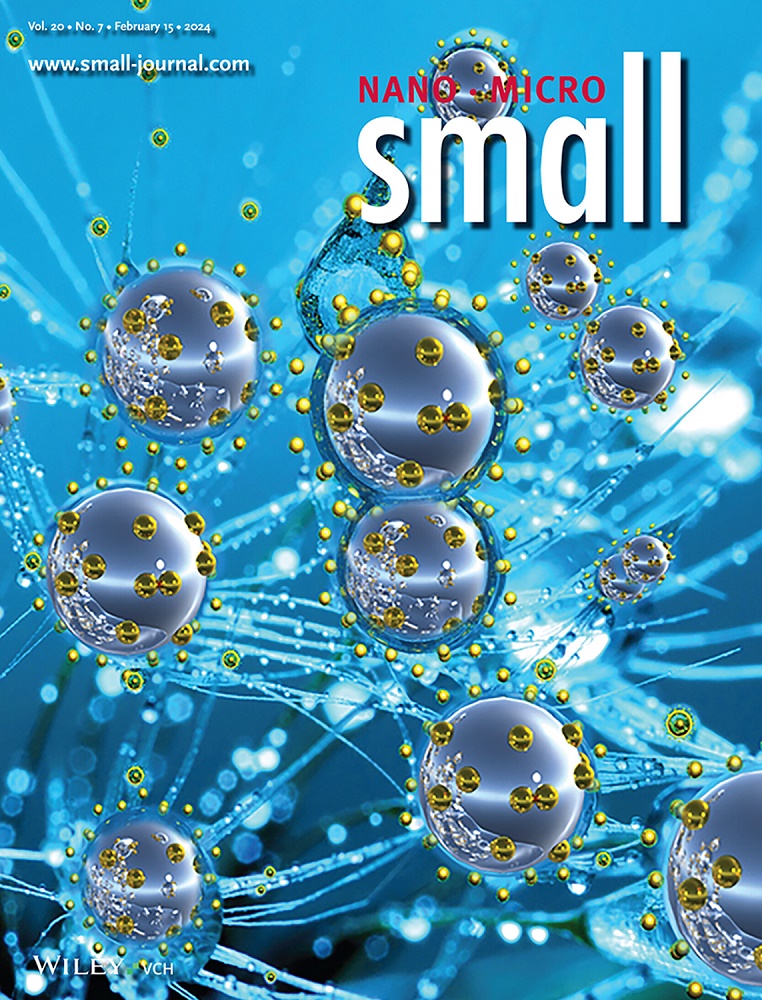An Ultra-Low Discharge and High Energy Efficiency Li-CO2 Battery Enabled by Plasmon-Enhanced AuRu-TiO2 Bifunctional Cathode.
IF 12.1
2区 材料科学
Q1 CHEMISTRY, MULTIDISCIPLINARY
引用次数: 0
Abstract
The extremely sluggish kinetics of CO2 evolution reaction of the lithium-carbon dioxide (Li-CO2) batteries lead to a high charging potentials (over 4.0 V) and large over-potentials (over 1.0 V), thus limiting its development. Herein, by synergistically exploiting the energetic hot carriers and photogenerated electron-hole pairs generated by plasmonic Au/Ru assembled on wide bandgap TiO2 nanowire array (TiO2-NWs), an ultra-low charge overpotential and high energy efficiency solid-state Li-CO2 battery via plasmon-enhanced Au/Ru-TiO2-NWs cathode, where solar energy can be efficiently harvested (over 96% absorptivity from 200 to 1500 nm), concentrated, and converted on the cathode is reported. The dual-active-site design of the Au/Ru catalysts not only enhances the localized surface plasmon resonance, but also facilitates CO2 reduction and evolution reaction kinetics by reducing the reaction kinetic barriers. As a result, the solid-state Li-CO2 battery based on Au/Ru-TiO2 cathode achieves a record ultra-low charging potential (≈2.57 V) and high energy efficiency (≈96.1%), far exceeding that of reported Li-CO2 batteries. Notably, the battery remains ≈2.64 V charge potential and ≈95.3% energy efficiency after 150 h. This work paves a way for developing high-energy-efficiency solid-state battery with a carbon neutral effect.等离子体增强AuRu-TiO2双功能阴极制备超低放电高能效Li-CO2电池。
锂-二氧化碳(Li-CO2)电池的CO2析出反应动力学极其缓慢,导致其充电电位高(超过4.0 V),过电位大(超过1.0 V),限制了其发展。本文通过协同利用在宽带隙TiO2纳米线阵列(TiO2- nws)上组装等离子体Au/Ru产生的高能热载子和光生电子空穴对,通过等离子体增强Au/Ru-TiO2- nws阴极制备了一种超低电荷过电位、高能效的固态Li-CO2电池,该电池可以高效地收集太阳能(在200 ~ 1500 nm吸收率超过96%),并在阴极上进行浓缩和转换。Au/Ru催化剂的双活性位点设计不仅增强了局部表面等离子体共振,而且通过降低反应动力学障碍,有利于CO2还原和进化反应动力学。因此,基于Au/Ru-TiO2阴极的固态Li-CO2电池实现了创纪录的超低充电电位(≈2.57 V)和高能效(≈96.1%),远远超过了已有报道的Li-CO2电池。值得注意的是,电池在150 h后仍保持≈2.64 V的充电电位和≈95.3%的能量效率。本工作为开发具有碳中和效应的高能效固态电池铺平了道路。
本文章由计算机程序翻译,如有差异,请以英文原文为准。
求助全文
约1分钟内获得全文
求助全文
来源期刊

Small
工程技术-材料科学:综合
CiteScore
17.70
自引率
3.80%
发文量
1830
审稿时长
2.1 months
期刊介绍:
Small serves as an exceptional platform for both experimental and theoretical studies in fundamental and applied interdisciplinary research at the nano- and microscale. The journal offers a compelling mix of peer-reviewed Research Articles, Reviews, Perspectives, and Comments.
With a remarkable 2022 Journal Impact Factor of 13.3 (Journal Citation Reports from Clarivate Analytics, 2023), Small remains among the top multidisciplinary journals, covering a wide range of topics at the interface of materials science, chemistry, physics, engineering, medicine, and biology.
Small's readership includes biochemists, biologists, biomedical scientists, chemists, engineers, information technologists, materials scientists, physicists, and theoreticians alike.
 求助内容:
求助内容: 应助结果提醒方式:
应助结果提醒方式:


